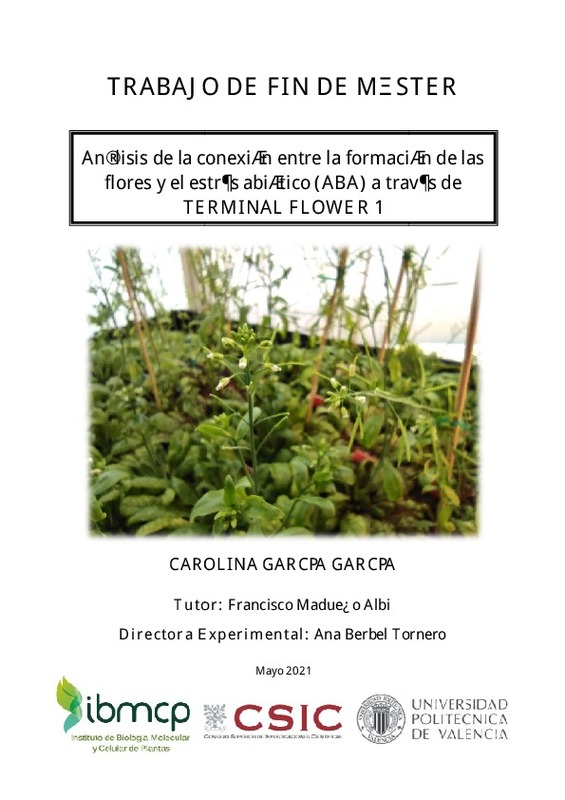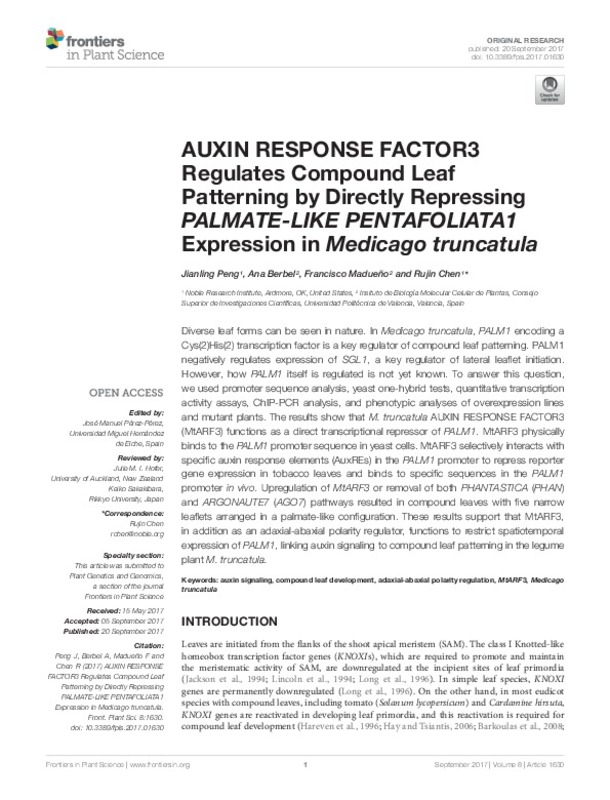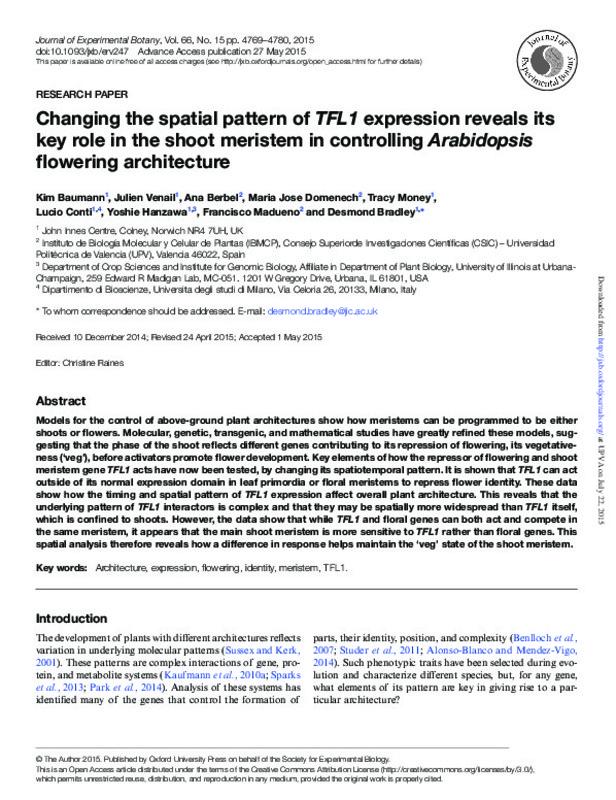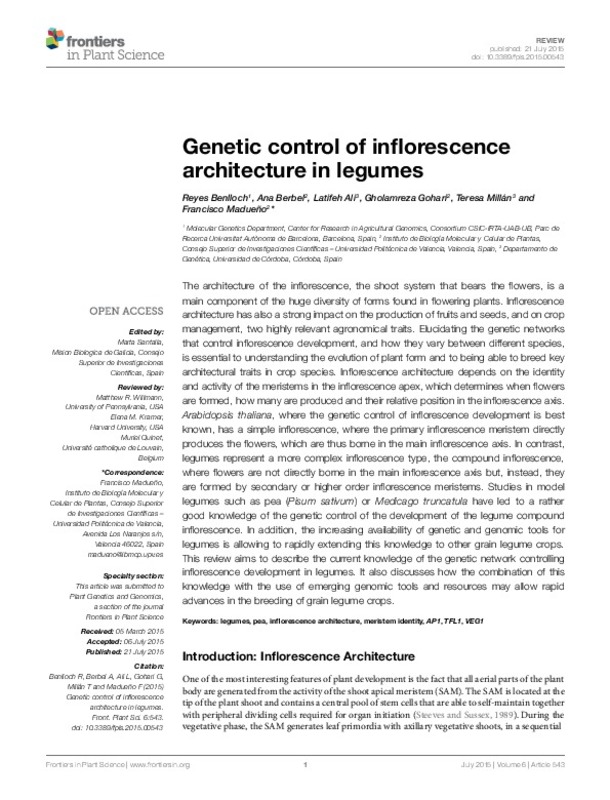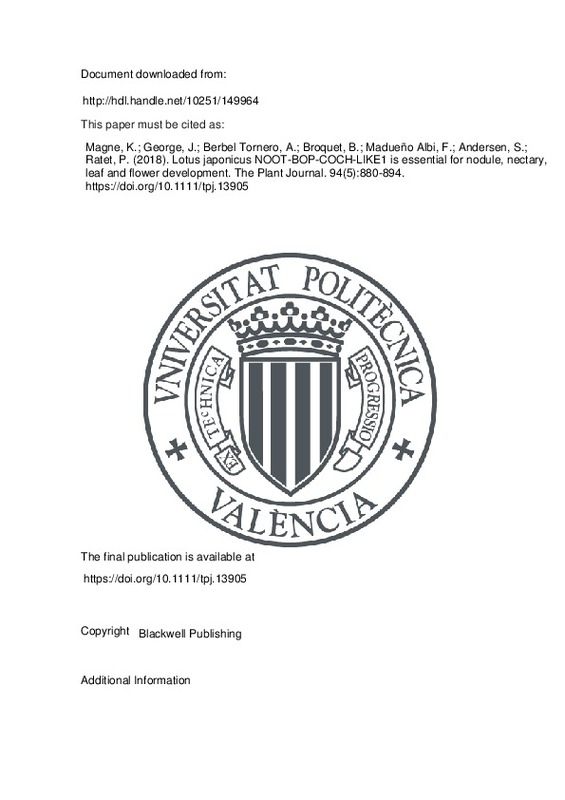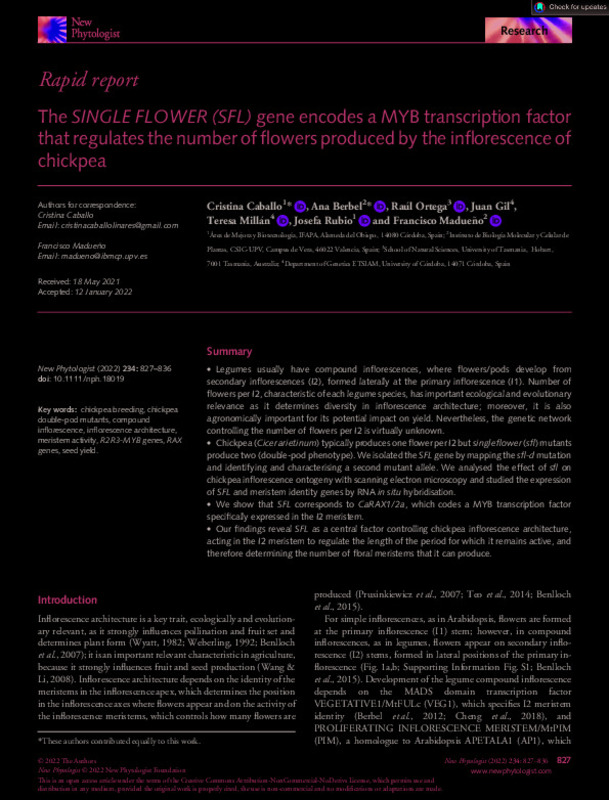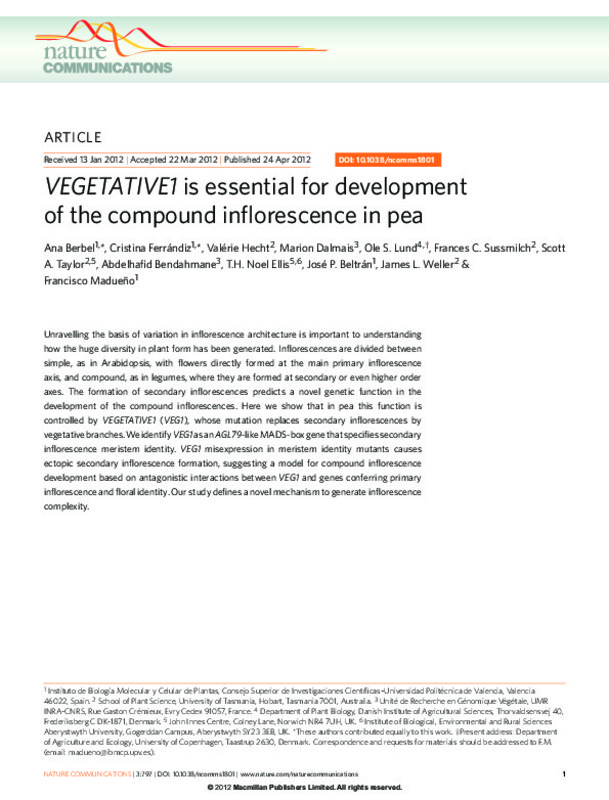

Listar por autor "Berbel Tornero, Ana"
RiuNet: Repositorio Institucional de la Universidad Politécnica de Valencia
- RiuNet repositorio UPV
- :
- Listar por autor
JavaScript is disabled for your browser. Some features of this site may not work without it.
Buscar en RiuNet
Listar
Mi cuenta
Ayuda RiuNet
Admin. UPV
Listar por autor "Berbel Tornero, Ana"
Mostrando ítems 1-13 de 13
-
García García, Carolina (Universitat Politècnica de València, 2021-07-01)[EN] Plant architecture s defined as the tridimensional spatial disposition of plant organs after their development and differentiation. This arrangement plays a key role in the ecology of plants and their interaction ...
-
Pautot, Véronique; Berbel Tornero, Ana; Cayla, Thibaud; Eschstruth, Alexis; Adroher, Bernard; Ratet, Pascal; MADUEÑO ALBI, FRANCISCO; Laufs, Patrick (MDPI AG, 2022-11)[EN] LEAFY plant-specific transcription factors, which are key regulators of flower meristem identity and floral patterning, also contribute to meristem activity. Notably, in some legumes, LFY orthologs such as Medicago ...
-
Peng, Jianling; Berbel Tornero, Ana; MADUEÑO ALBI, FRANCISCO; Chen, Rujin (Frontiers Media SA, 2017-09-20)[EN] Diverse leaf forms can be seen in nature. In Medicago truncatula, PALM1 encoding a Cys(2) His(2) transcription factor is a key regulator of compound leaf patterning. PALM1 negatively regulates expression of SGL1, a ...
-
Baumann, Kim; Venail, Julien; Berbel Tornero, Ana; Domenech Mir, Mª José; Money, Tracy; Conti, Lucio; Hanzawa, Yoshie; Madueño Albi, Francisco; Bradley, Desmond (Oxford University Press (OUP), 2015-08)Models for the control of above-ground plant architectures show how meristems can be programmed to be either shoots or flowers. Molecular, genetic, transgenic, and mathematical studies have greatly refined these models, ...
-
Pastor Martínez, Ivan (Universitat Politècnica de València, 2022-06-03)[ES] Las plantas han adoptado un desarrollo post-embrionario en el que a partir de los meristemos apicales que se forman durante la embriogénesis surgen el resto de las estructuras que formarán la planta adulta. Uno de ...
-
Menezes, S.; Artico, S.; Lima, C.; Muniz, S.; Berbel Tornero, Ana; Brilhante, O.; Grossi, M.F.; Ferrandiz Maestre, Cristina; Madueño Albi, Francisco; Alves, M. (Springer-Verlag, 2017)[EN] Reproductive development in cotton, including the fruit and fiber formation, is a complex process; it involves the coordinated action of gene expression regulators, and it is highly influenced by plant hormones. Several ...
-
Benlloch, Reyes; Berbel Tornero, Ana; Ali, Latifeh; Gohari, Gholamreza; Millán, Teresa; Madueño Albi, Francisco (Frontiers Media, 2015-07-21)[EN] The architecture of the inflorescence, the shoot system that bears the flowers, is a main component of the huge diversity of forms found in flowering plants. Inflorescence architecture has also a strong impact on the ...
-
Magne, K.; George, J.; Berbel Tornero, Ana; Broquet, B.; Madueño Albi, Francisco; Andersen, S.; Ratet, P. (Blackwell Publishing, 2018-06)[EN] The NOOT-BOP-COCH-LIKE (NBCL) genes are orthologs of Arabidopsis thaliana BLADE-ON-PETIOLE1/2. The NBCLs are developmental regulators essential for plant shaping, mainly through the regulation of organ boundaries, the ...
-
Sussmilch, FC; Berbel Tornero, Ana; Hecht, V; Vander, JK; Ferrandiz Maestre, Cristina; Madueño Albi, Francisco; Weller, JL (American Society of Plant Biologists, 2015-04)[EN] As knowledge of the gene networks regulating inflorescence development in Arabidopsis thaliana improves, the current challenge is to characterize this system in different groups of crop species with different inflorescence ...
-
Belda-Palazón, Borja; Gonzalez-Garcia, Mary-Paz; LOZANO JUSTE, JORGE; Coego Gonzalez, Alberto; Antoni-Alandes, Regina; Julian-Valenzuela, Jose; Peirats-Llobet, Marta; Rodríguez Solovey, Leisa Natacha; Berbel Tornero, Ana; Dietrich, Daniela; FERNÁNDEZ LÓPEZ, MARIA ANGELES; MADUEÑO ALBI, FRANCISCO; Bennett, Malcolm J.; Rodríguez Egea, Pedro Luís (Proceedings of the National Academy of Sciences, 2018)[EN] The phytohormone abscisic acid (ABA) plays a key role regulating root growth, root system architecture, and root adaptive responses, such as hydrotropism. The molecular and cellular mechanisms that regulate the action ...
-
Ge, Liangfa; Peng, Jianling; Berbel Tornero, Ana; Madueño Albi, Francisco; Chen, Ruijin (American Society of Plant Biologists, 2014-01)[EN] Plant leaves, simple or compound, initiate as peg-like structures from the peripheral zone of the shoot apical meristem, which requires class I KNOTTED-LIKE HOMEOBOXI (KNOXI) transcription factors to maintain its ...
-
Caballo, Cristina; Berbel Tornero, Ana; Ortega, Raúl; Gil, Juan; Millán, Teresa; Rubio, Josefa; MADUEÑO ALBI, FRANCISCO (Blackwell Publishing, 2022-05)[EN] Legumes usually have compound inflorescences, where flowers/pods develop from secondary inflorescences (I2), formed laterally at the primary inflorescence (I1). Number of flowers per I2, characteristic of each legume ...
-
Berbel Tornero, Ana; Ferrandiz Maestre, Cristina; Hecht, Valerie; Dalmais, Marion; Lund, Ole S.; Sussmilch, Frances C; Taylor, Scott A.; Bendahmane, Abdelhafid; Ellis, T. H. Noel; Beltran Porter, Jose Pio; Weller, James L.; Madueño Albi, Francisco (Nature Publishing Group, 2012-04)[EN] Unravelling the basis of variation in inflorescence architecture is important to understanding how the huge diversity in plant form has been generated. Inflorescences are divided between simple, as in Arabidopsis, ...
Mostrando ítems 1-13 de 13

Universitat Politècnica de València. Unidad de Documentación Científica de la Biblioteca (+34) 96 387 70 85 · RiuNet@bib.upv.es


